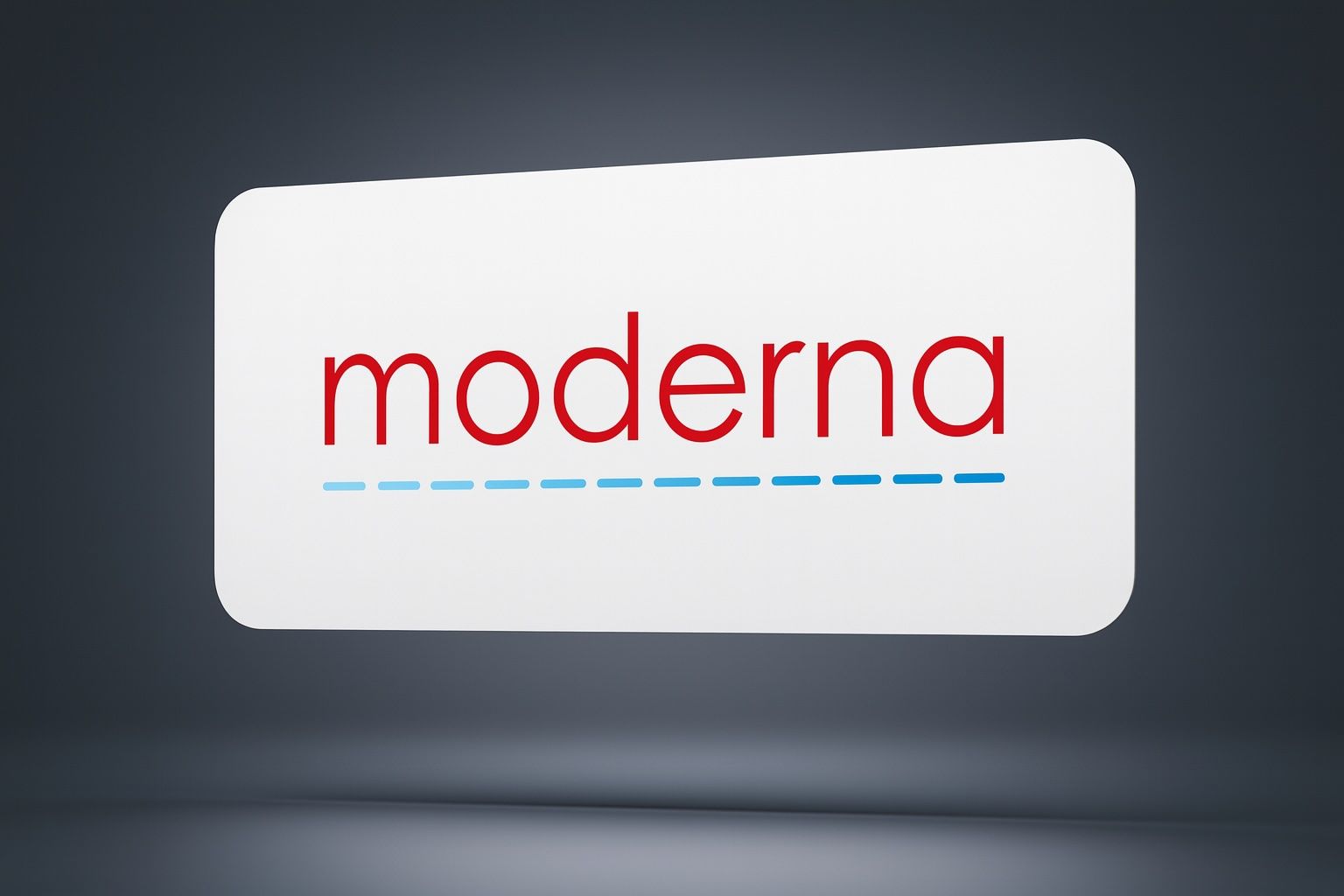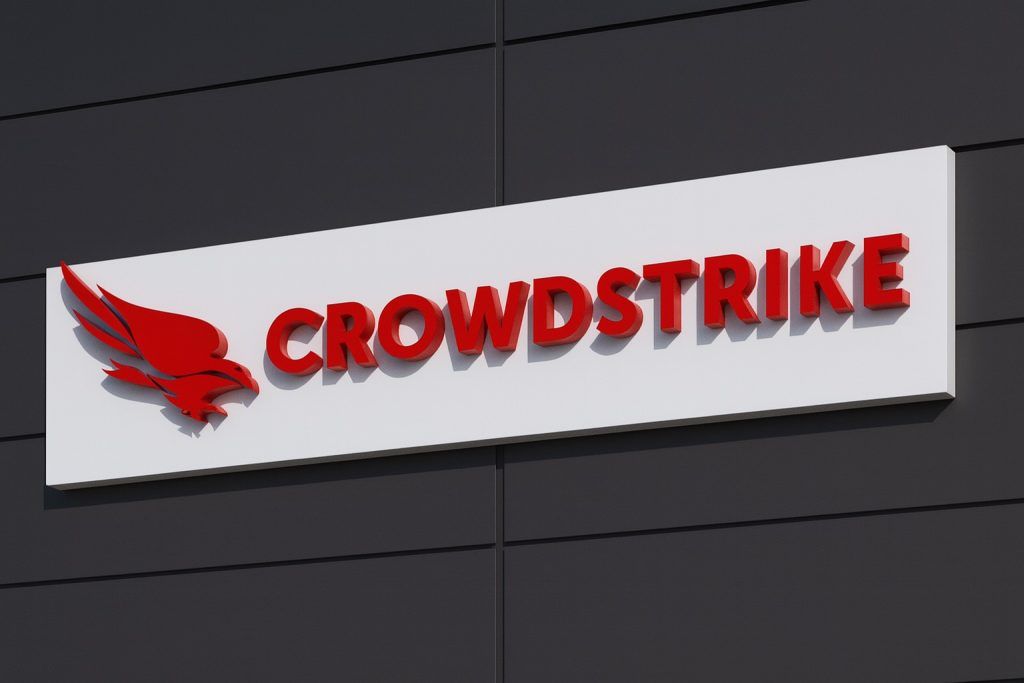- Stock price & market cap: Moderna closed at $27.34 on Oct 7 2025 (the last trading day before Oct 8), down ~0.7% and near the upper end of a broad falling trend [1]. StatMuse and StockAnalysis show that the company’s market cap hovered around $10.7–$11.2 billion in October 2025 with about 392 million shares outstanding [2] [3].
- Recent news: In late August the U.S. FDA and European regulators limited Moderna’s updated COVID boosters to adults 65+ and high‑risk individuals aged 6 months–64 years [4]. Moderna’s next‑generation mNEXSPIKE vaccine for high‑risk adults also received U.S. approval [5] and EU recommendation [6], but the narrow market reduces near‑term revenue potential.
- Financial results: Moderna’s Q2 2025 revenue fell 41% year‑over‑year to $142 million, largely from $114 million in Spikevax sales; it recorded a net loss of $0.8 billion (–$2.13 EPS) [7]. Management reduced 2025 revenue guidance to $1.5–2.2 billion and improved operating expense guidance to $5.9–6.1 billion [8].
- Pipeline & strategic direction: The company is betting on next‑generation mRNA products: the mRNA‑4157/V940 cancer vaccine (co‑developed with Merck) entered multiple Phase III trials after promising melanoma data [9]; the mRESVIA RSV vaccine and mNEXSPIKE COVID booster gained approvals in 2025 [10]. TS2.Tech expects interim efficacy data from cancer vaccine trials by late 2025 [11], which could validate the mRNA immunotherapy paradigm.
- Analyst forecasts: Despite the share price slump, consensus 12‑month price targets cluster around $204–$215 according to StockAnalysis, Investing.com, MarketBeat, TipRanks and MarketWatch [12]. However, the company’s sales forecasts have missed expectations and analysts warn that these targets are speculative.
- Competitor landscape: BioNTech, Moderna’s primary mRNA rival, reported Q2 2025 revenue of €261 million (doubling from 2024) and forecast 2025 revenue of €1.7–2.2 billion [13] [14]. Pfizer, Moderna’s former COVID‑vaccine partner, raised its 2025 profit forecast to $2.90–$3.10 per share thanks to cost cutting and strong drug sales [15] while cautioning that COVID product sales may remain volatile [16].
- Macro environment: On Oct 8 2025 broader markets rallied amid AI optimism despite fears of a U.S. government shutdown; analysts noted that the softer U.S. dollar, central bank buying and geopolitical risks pushed gold above $4,000/oz [17]. The macro backdrop of high interest rates, inflation and global tensions affects biotech valuations and investor risk appetite.
Detailed Report
1. Stock Performance and Valuation
Moderna’s stock was a market darling during the pandemic but has suffered a long decline. On Oct 7 2025 (the last trading day before the U.S. Columbus Day holiday), the stock closed at $27.34, down roughly 0.7% from $27.54 on the prior session [18]. Technical analysts at Stockinvest.us noted the shares were near the upper part of a wide falling trend and predicted a possible trading range of $26.40–$28.73 on Oct 8, with longer‑term support around $26 and resistance near $31 [19]. While short‑term signals were positive, they cautioned that the overall downward trend remains [20].
Because multiple financial data sites blocked direct access, we rely on StatMuse and StockAnalysis for market capitalization. StatMuse lists Moderna’s market value at about $11.2 billion based on a $28.51 share price with roughly 391.93 million shares outstanding [21]. StockAnalysis shows that at Oct 8 2025 1:24 PM EDT the stock traded near $28.44 and the market cap was about $11.07 billion [22]. These valuations are a fraction of Moderna’s pandemic‑era peak and highlight the steep decline in investor expectations.
2. Recent News and Regulatory Developments
Booster eligibility restrictions: In August 2025, the U.S. FDA approved Moderna’s updated Spikevax booster targeting the LP.8.1/JN.1 variant but restricted use to adults 65+ and high‑risk individuals aged 6 months–64 years [23]. The Infectious Diseases Society of America criticized the limited rollout, warning that vulnerable populations might be left unprotected [24]. The EU’s regulator similarly recommended approval for the LP.8.1‑targeting Spikevax formulation, which will be available for the 2025‑26 respiratory season [25].
New vaccine approvals: Moderna secured U.S. approval for its next‑generation mNEXSPIKE vaccine for adults aged 65+ and for high‑risk individuals 12–64 years [26]. The vaccine, designed to provide broader and longer‑lasting protection, will be supplied for the 2025–26 season. Meanwhile, the company’s mRESVIA RSV vaccine and Spikevax also received approvals for high‑risk infants and children [27].
Trial data: On Sept 23 2025 Moderna reported that its mNEXSPIKE vaccine produced a 16‑fold increase in neutralizing antibodies against the LP.8.1 variant in older adults and those with underlying conditions [28]. This strong immunogenicity may support regulatory expansion in the future.
3. Financial Results and Outlook
Moderna’s financial statements illustrate the challenge of transitioning beyond pandemic revenue. The second quarter of 2025 delivered $142 million in revenue, a 41% year‑over‑year decline, mainly from $114 million in Spikevax sales [29]. The company reported a GAAP net loss of $0.8 billion (–$2.13 per share) despite cost cuts, though this loss narrowed from $1.3 billion a year earlier [30]. Research and development expenses fell 43% to $700 million and selling/general expenses declined 14% to $230 million [31].
Management cut 2025 revenue guidance to $1.5–2.2 billion and reduced operating expense guidance to $5.9–6.1 billion [32]. They expect 40–50% of revenue recognition in Q3 and the remainder in Q4 due to the seasonality of vaccine shipments [33]. Cash and investments were $7.5 billion at mid‑year, and the company aims to finish 2025 with around $6 billion on its balance sheet [34].
Earlier in 2025 Moderna warned that weak demand for RSV and COVID vaccines would cut 2025 sales by about $1 billion, causing shares to drop more than 24% [35]. The company launched cost‑cutting initiatives and targeted $1 billion in cash savings to maintain financial flexibility [36].
4. Pipeline and Strategic Direction
Moderna is repositioning itself as a broad‑based mRNA therapeutics company rather than a single‑product vaccine maker. The mRNA‑4157/V940 personalised cancer vaccine, developed with Merck, entered multiple Phase III trials for melanoma and non‑small cell lung cancer in 2025 after promising early data [37]. TS2.Tech notes that interim efficacy results could be presented at major oncology conferences in late 2025 [38], which would be pivotal for investor sentiment. BioNTech is pursuing a similar strategy with personalised mRNA vaccines and is expected to release data around the same time [39].
Beyond oncology, Moderna’s pipeline includes mRESVIA for respiratory syncytial virus, mNEXSPIKE for COVID, combo flu/COVID‑RSV shots, rare disease treatments, and latent virus vaccines. The next‑generation COVID booster mNEXSPIKE is designed to provide broader antigen coverage and may serve as a platform for combination vaccines.
5. Analyst Forecasts and Market Sentiment
Despite the stock’s slump, analyst price targets remain elevated. A mid‑September 2025 report by Capital.com compiled multiple forecasts: StockAnalysis’s 12‑month target was $203.88, Investing.com $206.72, MarketBeat $207.69, TipRanks $210.73 and MarketWatch (LSEG/FactSet) $215.14 [40]. The consensus range of $204–$215 implies a nearly eight‑fold upside from the current price but reflects long‑term expectations for oncology vaccine success rather than near‑term earnings. The report cautioned that such predictions are often inaccurate and may shift with new data [41].
Technical analysts at Stockinvest.us noted that while short‑term signals are positive, the broader downtrend suggests caution [42]. Investor sentiment has been weighed down by declining COVID revenues, regulatory uncertainty and the long timelines for oncology trials.
6. Expert Commentary and Industry Analysis
During an Aug 5 2025 Reuters interview, Pfizer CEO Albert Bourla acknowledged the pressure from the U.S. government to lower drug prices and described ongoing discussions with President Trump to balance affordability with industry competitiveness [43]. He emphasized that drugmakers might consider reducing the influence of middlemen and adjusting to new tariffs [44]. Portfolio manager Daniel Barasa of Gabelli Funds noted that Pfizer leans on cost management to drive performance [45], while Brian Mulberry of Zacks Investment Management said the company’s conservative sales outlook reflects the expected decline in blockbuster drug revenues as generics emerge [46]. These comments underscore the broader pharmaceutical sector’s shifting economics.
Analysts covering Moderna view the cancer vaccine program and combination shots as potential long‑term catalysts but warn that the company must demonstrate efficacy and manage costs. The Infectious Diseases Society of America’s criticism of narrow booster eligibility [47] highlights political and public‑health risk factors that could limit uptake.
7. Comparison with Competitors
BioNTech (BNTX): The German mRNA pioneer reported Q2 2025 revenue of €261 million—double the prior year—and a net loss of €387 million [48]. BioNTech reiterated 2025 revenue guidance of €1.7–2.2 billion [49] and continues to invest heavily in oncology. The company is acquiring CureVac for $1.25 billion to expand its mRNA cancer portfolio, and Bristol Myers Squibb agreed to pay up to $11.1 billion to co‑develop BioNTech’s next‑generation immunotherapy [50]. Another Reuters report noted that BioNTech will cut 950–1,350 jobs while adding other roles as it rebalances resources [51]. These developments show that BioNTech is also facing revenue declines but is investing in a pipeline similar to Moderna’s.
Pfizer (PFE): Moderna’s former partner has diversified revenue streams. In August 2025 Pfizer raised its 2025 profit forecast to $2.90–$3.10 per share (from $2.80–$3.00), citing cost cuts and strong sales of key drugs [52]. It expects to deliver $7.2 billion in savings by 2027 with $4.5 billion realized by 2025 [53]. Total Q2 sales of $14.65 billion exceeded expectations [54], although management maintained full‑year revenue guidance of $61–64 billion and warned that COVID product sales (Comirnaty and Paxlovid) could be volatile [55]. Pfizer’s cost‑cutting success and broad product portfolio provide stability, contrasting with Moderna’s dependence on a few pipeline assets.
8. Geopolitical and Economic Influences
On Oct 8 2025, U.S. stocks recovered from a brief slump as investors focused on artificial‑intelligence optimism despite concerns about a potential government shutdown and geopolitical tensions. Market analysts observed that a softer U.S. dollar, central bank gold purchases and geopolitical risk pushed gold above $4,000 per ounce [56]. High interest rates, persistent inflation and currency fluctuations influence biotech financing costs and investor risk appetite. Additionally, U.S. political pressure to reduce drug prices—highlighted by Pfizer’s conversations with President Trump [57]—could compress margins across the pharmaceutical sector. International trade tensions (e.g., U.S.–EU tariffs) may also impact supply chains and manufacturing costs [58].
9. Risk Factors and Investment Considerations
- Revenue Concentration: Moderna still derives most revenue from COVID‑related products, which face waning demand. Delays or limited uptake of new boosters could depress sales despite cost reductions.
- Regulatory & Political Risk: Booster eligibility restrictions and government pressure to lower drug prices pose revenue headwinds [59] [60]. Tariffs or supply chain disruptions could increase costs.
- Pipeline Execution: The success of the personalised cancer vaccine and other mRNA candidates is critical. Failure to demonstrate efficacy or safety could materially impair long‑term prospects.
- Competition: BioNTech, Pfizer and others are developing similar mRNA vaccines and oncology therapies. Their larger cash reserves and diversified portfolios may allow them to outspend Moderna on R&D.
- Macro Volatility: High interest rates, economic uncertainty and geopolitical tensions can reduce biotech valuations and hamper capital raising. Market enthusiasm for AI has created sector rotation that may benefit or disadvantage biotech stocks at different times [61].
10. Outlook
Moderna remains a high‑risk, high‑reward investment. The stock’s collapse from pandemic heights reflects the market’s skepticism about near‑term profitability. However, the company retains significant cash and a broad pipeline that includes cancer vaccines, RSV shots and next‑generation boosters. Regulatory approvals for mNEXSPIKE and mRESVIA provide near‑term revenue streams, but their market potential is limited by eligibility restrictions. The critical inflection point will come when Moderna and Merck disclose Phase III data for the mRNA‑4157/V940 cancer vaccine later in 2025. Positive results could catalyze a re‑rating of the stock, while disappointing data would underscore the risks of the mRNA platform. Investors should weigh these uncertainties against the broader macro backdrop and consider diversified exposure to the biotech sector.
In summary, Moderna’s stock was hovering around $27.34 on October 7, 2025, giving the company a market cap near $11 billion, far below its pandemic-era heights [62] [63]. The Q2 2025 financial results showed a steep revenue decline to $142 million and a net loss of $0.8 billion, prompting management to slash its 2025 revenue guidance to $1.5–2.2 billion [64]. Regulatory headwinds persisted as health authorities limited the rollout of updated boosters to high-risk groups, dampening near-term sales prospects [65].
The report highlights Moderna’s strategic pivot toward next-generation mRNA products, particularly its personalized cancer vaccine mRNA‑4157/V940 developed with Merck, which entered Phase III trials in 2025 [66]. Analyst price targets remain lofty at $204–215, reflecting hopes that oncology breakthroughs could revive growth [67]. However, fierce competition from BioNTech and Pfizer—both of which have diversified revenue streams and are executing cost-cutting programs [68] [69]—underscores the high-risk nature of investing in Moderna. Macro uncertainties like political pressure to lower drug prices and geopolitical tensions further complicate the outlook [70] [71]. Ultimately, the report suggests Moderna is a speculative play hinging on forthcoming clinical data and regulatory outcomes.
References
1. stockinvest.us, 2. www.statmuse.com, 3. stockanalysis.com, 4. www.reuters.com, 5. www.reuters.com, 6. www.reuters.com, 7. www.biospace.com, 8. www.biospace.com, 9. ts2.tech, 10. www.reuters.com, 11. ts2.tech, 12. capital.com, 13. www.reuters.com, 14. www.reuters.com, 15. www.reuters.com, 16. www.reuters.com, 17. www.reuters.com, 18. stockinvest.us, 19. stockinvest.us, 20. stockinvest.us, 21. www.statmuse.com, 22. stockanalysis.com, 23. www.reuters.com, 24. ts2.tech, 25. www.reuters.com, 26. www.reuters.com, 27. www.reuters.com, 28. www.reuters.com, 29. www.biospace.com, 30. www.biospace.com, 31. www.biospace.com, 32. www.biospace.com, 33. www.biospace.com, 34. www.reuters.com, 35. www.reuters.com, 36. www.reuters.com, 37. ts2.tech, 38. ts2.tech, 39. ts2.tech, 40. capital.com, 41. capital.com, 42. stockinvest.us, 43. www.reuters.com, 44. www.reuters.com, 45. www.reuters.com, 46. www.reuters.com, 47. ts2.tech, 48. www.reuters.com, 49. www.reuters.com, 50. www.reuters.com, 51. www.reuters.com, 52. www.reuters.com, 53. www.reuters.com, 54. www.reuters.com, 55. www.reuters.com, 56. www.reuters.com, 57. www.reuters.com, 58. www.reuters.com, 59. www.reuters.com, 60. www.reuters.com, 61. www.reuters.com, 62. stockinvest.us, 63. stockanalysis.com, 64. www.biospace.com, 65. www.reuters.com, 66. ts2.tech, 67. capital.com, 68. www.reuters.com, 69. www.reuters.com, 70. www.reuters.com, 71. www.reuters.com








